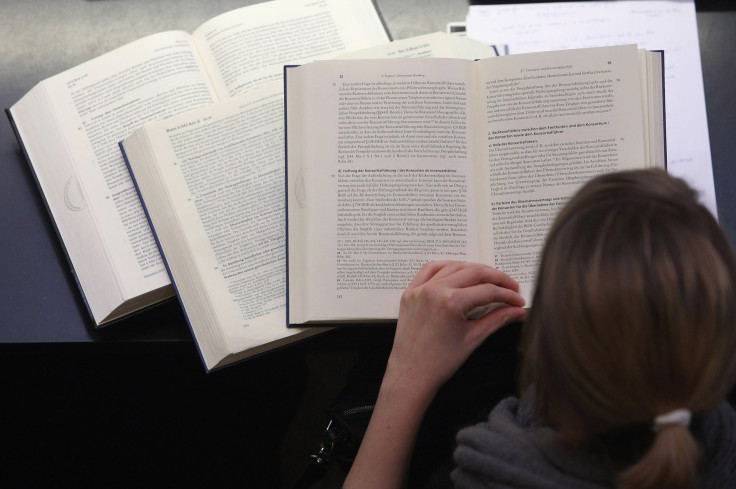Obama Administration's Financial Aid Experiment For Poor Students Innovative But 'Tricky,' Experts Say

As the cost of college climbs and the inequality gap grows, the government is exploring alternative ways to get low-income Americans involved in higher education. The Obama administration's latest plan to do this, announced Wednesday and called the Educational Quality through Innovative Partnerships pilot, continues the mission by offering federal aid to students enrolled in nontraditional programs like coding boot camps or massive open online courses. It bills itself as a way to increase poor people's access to education -- and later on, high-paying jobs -- while ensuring quality so taxpayer dollars aren't wasted.
But policy experts said the experimental initiative may not be the panacea it's being advertised as. Though the certification programs often lead to jobs, low-income students don't typically take advantage. It's unclear whether the pilot would change that, adding to mounting concerns that allowing the programs to receive federal money could open them up to fraud.
"What low-income people are looking for is not, mainly, this," said Sara Goldrick-Rab, an educational-policy studies and sociology professor at the University of Wisconsin in Madison, adding that most are seeking reliable credentials that can move them up the economic ladder. "If I was going to pick something for the department to be focused on, I would be focusing on institutional providers and getting those costs covered rather than expanding with noninstitutional providers."
The pilot program fits in with President Barack Obama's push to improve access, affordability and outcomes for students at a time when Americans have record amounts of student loan debt and less than half of low-income residents are enrolled in college. When inflation is considered, students today pay about triple what they did 30 years ago to attend public four-year schools. Between the 1970s and early 2000s, the achievement gap between high- and low-income students widened by about 40 percent.
The Educational Quality through Innovative Partnerships model would let companies partner with colleges and universities, as well as outside accrediting agencies, and apply for aid under Title IV of the Higher Education Act, which provides grants, loans and work-study to eligible students. This would theoretically open up expensive programs to the poor students who needed them most.
Coding boot camps are expected to turn out more than 16,000 graduates this year, an increase of more than 240 percent from 2014, the department said. Participants see an average 44 percent salary increase after completing the intense classes, according to a study from review site Course Report.
However, these programs don't typically attract low-income people without postsecondary education, Goldrick-Rab said. About 63 percent of participants are employed full time, and 71 percent of them already have bachelor's degrees. They cost an average of $10,267.
So while boot camps and massive open online courses may be effective for some people, they're not a perfect model for everyone, Goldrick-Rab said. "Access programs are supposed to be about engaging people who are not otherwise engaged. These programs are about engaging people who in most cases are already engaged," she added.
It could also force schools to stretch their already-tight budgets to fund programs that haven't yet produced long-term results, Goldrick-Rab said. She suggested the government focus its efforts on bolstering community colleges instead.
David Soo, a senior policy adviser for the Education Department, said during a press call Tuesday that community colleges could collaborate with the outside programs to make sure they're up to par, and even give academic credit for student participation. "In the future, the student could continue their postsecondary education with credits already building toward an associate's degree," Soo said. The department was due to accept fewer than 10 applicants for the initial pilot, Inside Higher Ed reported.
The program is innovative, but it could also invite fraud, said Barmak Nassirian, director of federal relations and policy analysis for the American Association of State Colleges and Universities, a group of public institutions based in Washington. Companies may let their standards slip if there's less pressure from students who are paying less out of pocket.
"They work precisely because they have to prove to paying customers that it's worth spending 10, 12, 20 thousand bucks to invest in something that is not a recognized academic credential," Nassirian said. "The minute you make student loans and Pell Grants available, all of those sensitivities go out the door. The race will be on for who can sell better, not who can educate better."
Becky Klein-Collins, associate vice president for research policy development at the Council for Adult and Experiential Learning in Chicago, said she generally supports the proposal but acknowledged that the details are "tricky." For example, she said programs need to have support systems in place for students who may struggle with college-level work or require flexible course schedules.
But Klein-Collins said the Education Department's pilot is a good start to provide opportunities to people who don't traditionally enjoy them. "On one hand, it's much easier to innovate outside of the traditional higher-ed environment," she said. "And yet you don't want innovation to be shut out from those who can really benefit from it."
© Copyright IBTimes 2025. All rights reserved.






















